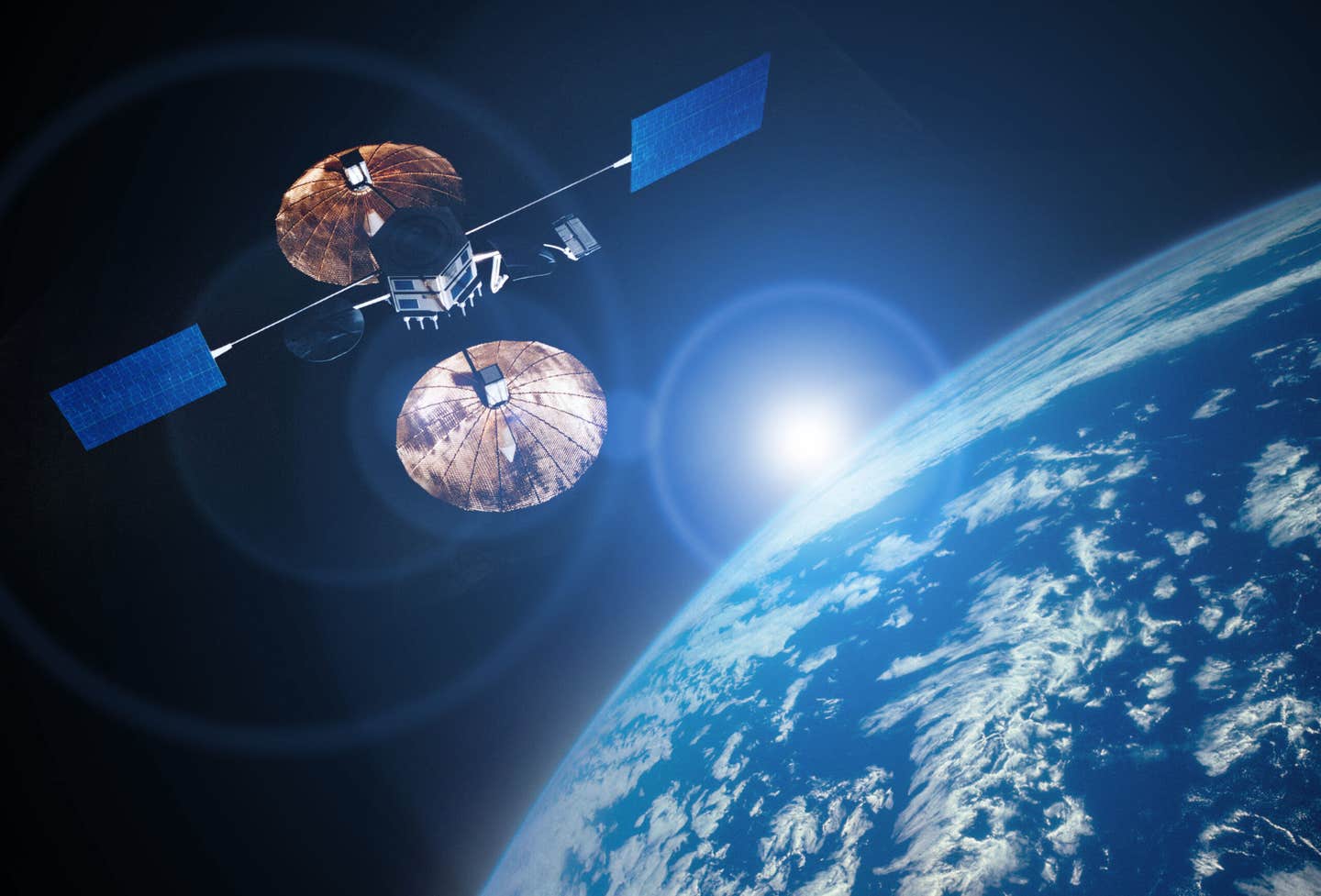Earth’s magnetic field is shifting — and satellites are feeling it
Swarm satellites reveal major shifts in Earth’s magnetic field, including a growing weak zone over the South Atlantic.

Over 11 years of satellite data reveal that Earth’s magnetic field is reshaping. (CREDIT: Shutterstock)
More than a decade of satellite monitoring has mapped Earth's magnetic field as it subtly altered between 2014 and 2025 — and what scientists have learned is remarkable. The South Atlantic Anomaly, a weak region, is expanding, the north magnetic pole is moving towards Siberia, and the unseen shield that protects life against solar and cosmic radiation is evolving at a rate never recorded before.
After a Global Force
The Earth's magnetic field is similar to a huge, constantly changing bubble that shields the planet by deflecting charged particles and radiation from the Sun. It's created far below our feet in a sea of molten iron that churns around in the outer core some 1,800 miles down. When the liquid metal moves, electric currents result, which produce the magnetic field.
Since 2013, the European Space Agency's Swarm mission — a trio of satellites known by the nicknames Alpha, Bravo, and Charlie — has been tracking this hidden force with greater precision than ever before. Each of the three spacecraft tracks both direction and magnitude of the magnetic field enveloping the planet, helping scientists to break down signals that reach not only from the core but also from the crust, oceans, ionosphere, and magnetosphere.
Through employing only Swarm data and not combining several satellite sources, scientists ensured the record to be reliable in space and time. Their research builds an uninterrupted image of the manner in which the Earth's core field evolved over the past eleven years.
The Expanding Weak Zone
One of the research's most astonishing discoveries is above the South Atlantic Ocean. There, in the region called the South Atlantic Anomaly, the magnetic field is unusually weak — a region where satellites can be hit with excess radiation that occasionally leads to failures or even temporary shutdowns.
Since 2014, the region of weak field has grown by nearly two million square miles — about half the size of continental Europe. The weakest field throughout the region has dropped over 330 nanoteslas, and the affected region now covers nearly one percent of Earth's surface.
Chris Finlay, professor of geomagnetism at Denmark's Technical University and senior author of the study, states that the South Atlantic Anomaly is not a single unit. "It's changing differently towards Africa than it is near South America," he says. "There's something strange going on in this region that's causing the field to reduce in a more deeper way.".
Underlying that area, Swarm's measurements show enigmatic "reverse flux patches" where magnetic field lines abruptly dip back into Earth's interior instead of bending outward. A reversed zone has migrated westward under Africa in recent years, likely fueling the current decline in field strength there.
A Tug-of-War in the North
Whereas the South Atlantic is weakening, a drama is being enacted in the Northern Hemisphere. Two strong magnetic regions — one located over Canada and the other over Siberia — are engaged in what scientists call a magnetic tug-of-war.
During the last decade, the Canadian sector has lost strength and diminished by approximately 0.65 percent of Earth's surface area — approximately India's size. The Siberian sector, on the other hand, has gained power by approximately 0.42 percent, an area roughly the size of Greenland. The changing balance goes some way to explaining why the North Magnetic Pole has been moving so swiftly towards Siberia in recent years.
When you're trying to understand Earth's magnetic field, you should know it's not a simple bar magnet," Finlay added. "It's only with the satellites like Swarm that we can get an idea of how dynamic and complex it is."
Peering Beneath the Surface
To observe why these transformations appear as they do on the surface, researchers looked deeper — to the boundary between Earth's outer liquid core and solid mantle, around 1,800 miles beneath the earth's surface. There, massive currents of molten iron generate magnetic patterns that change and evolve with time.
From 2014 to 2025, the big magnetic features under Africa moved west, and the ones under Siberia and Alaska moved south and west. Some of them got stronger, some of them got weaker. These deep movements ripple out and slowly alter the magnetic field we sense near the surface.
The Swarm data show that nearly all of the variation you can quantify at Earth's surface — more than 99 percent of it — can be explained by core-scale motion. They are driven by powerful buoyancy forces, rotation, and magnetohydrodynamic waves that churn in the liquid metal.
Why It Matters
Changes in Earth's magnetic field can be far-reaching, although they appear unreal. Compasses and navigation devices depend on it. Satellites exposed to more radiation in regions where the field is weak can become infested with bugs or even be irreparably damaged. Even space travelers in orbit around our planet depend on this magnetic shield for protection against nasty solar storms.
South Atlantic Anomaly is already known to space organizations as a threat. Spacecraft passing over the region are more likely to be corrupted with data or experience equipment failure, leading to radiation-hardened equipment being designed and shutdown planning when crossing the zone.
The Mission That Keeps Watching
ESA's Swarm mission, which began in late 2013 within the agency's FutureEO programme, was planned for four years but remains active. The satellites currently offer the longest continuous record of magnetic field measurements ever made from space.
Due to the long timeseries of Swarm, we can actually see the big picture of our dynamic planet," said ESA's Swarm Mission Manager Anja Stromme. "The satellites are all healthy and providing us with excellent data, so hopefully we can keep this record going way beyond 2030.".
Scientists will employ the growing Swarm data to more rigorously test computer models known as geodynamo models — digital replicas of the molten core's movement. They may eventually forecast how the field will evolve decades in the future, as meteorologists forecast the atmosphere.
Practical Implications of the Research
An improved knowledge of the alteration of Earth's magnetic field will better protect satellites, power lines, and navigation systems that rely on magnetic data. Monitoring weaknesses like the South Atlantic Anomaly might lead to more efficient spacecraft construction and safer flights into space.
For scientists, these findings give them a broader view into the hidden machinery of Earth's interior.
By comparing Swarm's magnetic recording with computer simulations of fluid-dynamics, researchers can uncover how liquid iron flows within the core — and how that movement drives the magnetic field that sustains life on Earth.
Research findings are available online in the journal Physics of the Earth and Planetary Interiors.
Related Stories
- Cosmic web reveals tiny magnetic fields from the dawn of time
- The Moon once had magnetic fields as strong as Earth’s
- How does the Earth generate its magnetic field?
Like these kind of feel good stories? Get The Brighter Side of News' newsletter.
Joshua Shavit
Science & Technology Writer and Editor
Joshua Shavit is a Los Angeles-based science and technology writer with a passion for exploring the breakthroughs shaping the future. As a co-founder of The Brighter Side of News, he focuses on positive and transformative advancements in AI, technology, physics, engineering, robotics and space science. Joshua is currently working towards a Bachelor of Science in Business and Industrial Engineering at the University of California, Berkeley. He combines his academic background with a talent for storytelling, making complex scientific discoveries engaging and accessible. His work highlights the innovators behind the ideas, bringing readers closer to the people driving progress.



